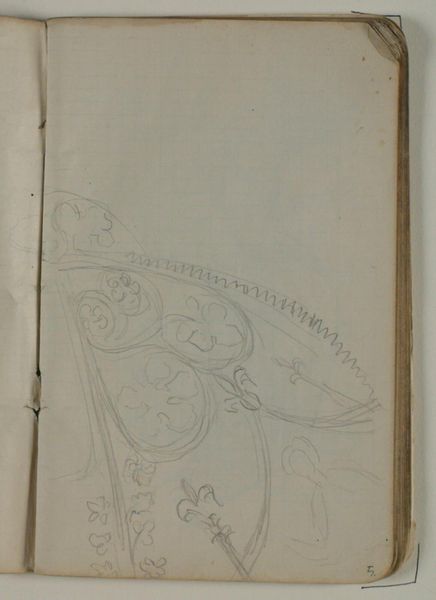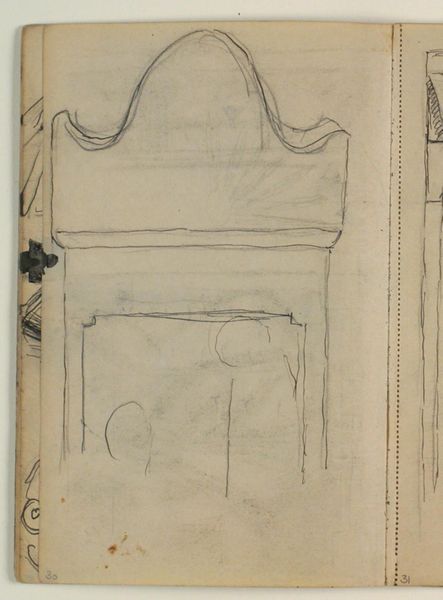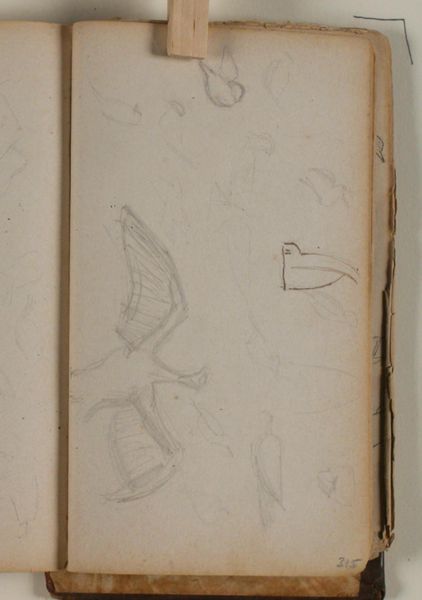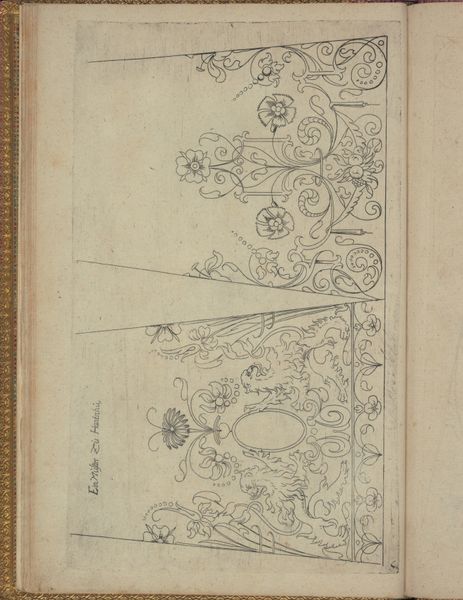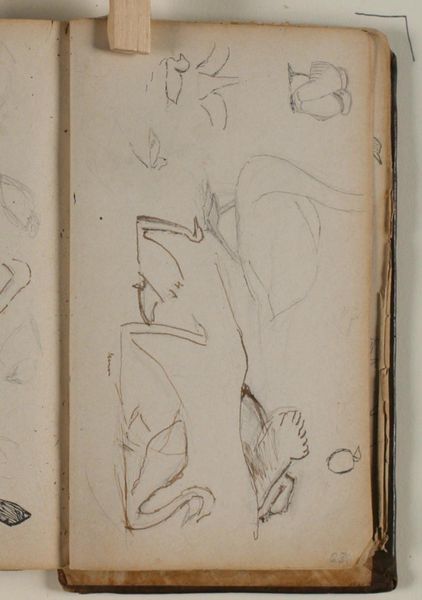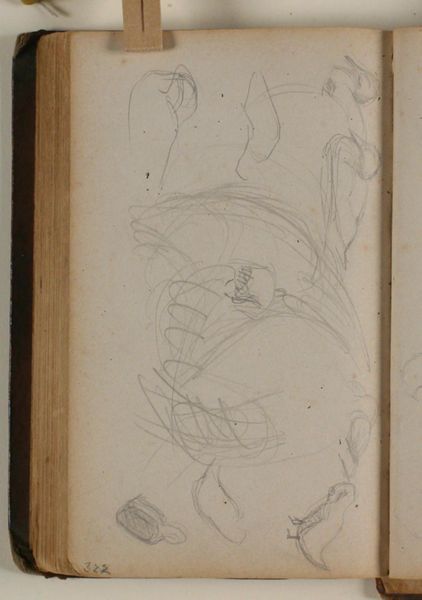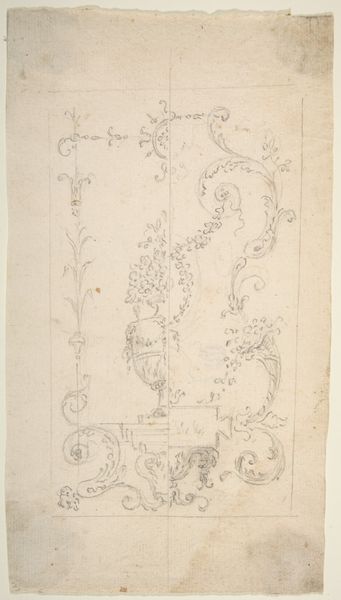
drawing, paper, pencil
#
drawing
#
art-nouveau
#
paper
#
geometric
#
pencil
#
line
Dimensions: 169 mm (height) x 109 mm (width) x 5 mm (depth) (monteringsmaal), 169 mm (height) x 109 mm (width) (bladmaal)
Editor: Here we have Niels Larsen Stevns’ “Ornamentstudier. Notater,” dating from 1905-1907. It's a pencil drawing on paper, currently held at the SMK. I'm struck by how raw and functional it feels, like looking through the artist’s working process. What jumps out at you? Curator: What I notice first is how this drawing allows us to consider the labor involved in artistic creation. We're seeing sketches, studies, not a finished piece intended for consumption. The materiality of the pencil and paper is foregrounded; these are readily available, relatively inexpensive tools that democratized access to image-making. Editor: So you see value in these more preliminary sketches? Curator: Absolutely. This "Ornamentstudier" highlights the process of making. Note the art nouveau style; the flowing lines evoke organic forms. This challenges the hierarchy between the fine arts and decorative arts. These "ornaments" were destined for a craft product of some kind. It reveals how artists like Stevns contributed to mass culture through design, impacting everyday aesthetics and commercial products. Consider the social implications. Editor: I guess I hadn’t considered how much labor and social context can be present even in something that appears so simple and stripped down. I initially just saw them as doodles, more or less, but clearly they signify more than that. Curator: Exactly. By analyzing the materials and intended use, we uncover connections between the artist, the craftsman, and consumer society. We understand better the artist's social position and the means of artistic production, challenging notions of individual genius and rarefied artistry. The drawing gives insights to how things were crafted and conceived, during the peak of the Arts and Crafts Movement. Editor: I see it now, and thank you. Thinking about how these designs were intended to be used in other products brings a different meaning to it, not merely art on its own, but as a component of craft. It almost feels revolutionary for its time, to view craft with such detail and care. Curator: Indeed. Hopefully that expands your understanding about art, labor, and historical consumption.
Comments
No comments
Be the first to comment and join the conversation on the ultimate creative platform.
